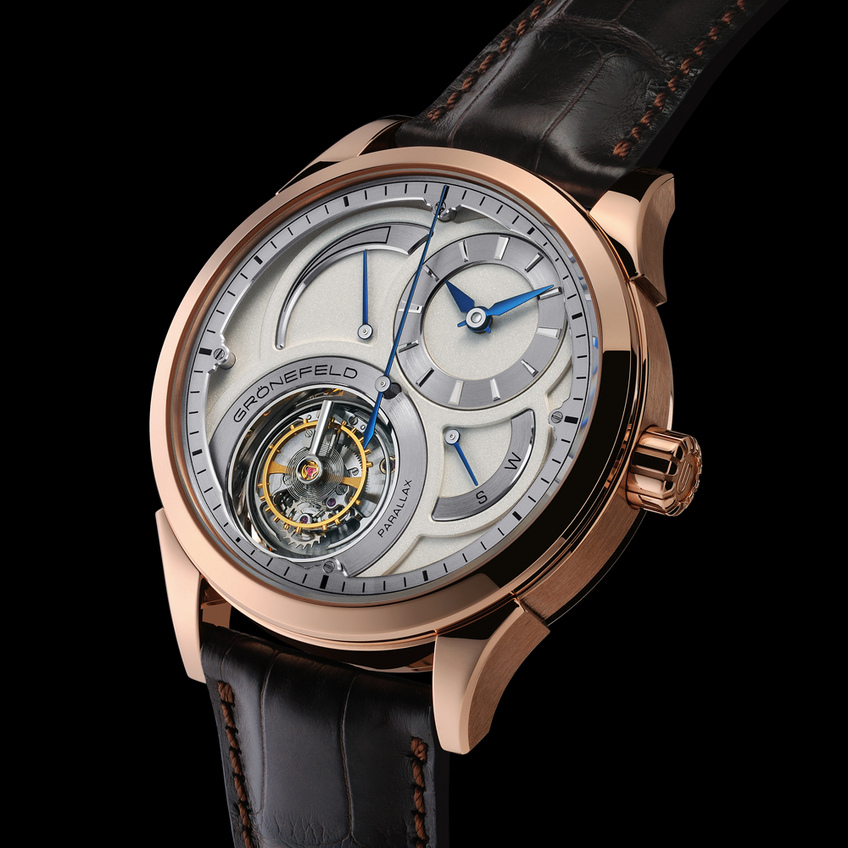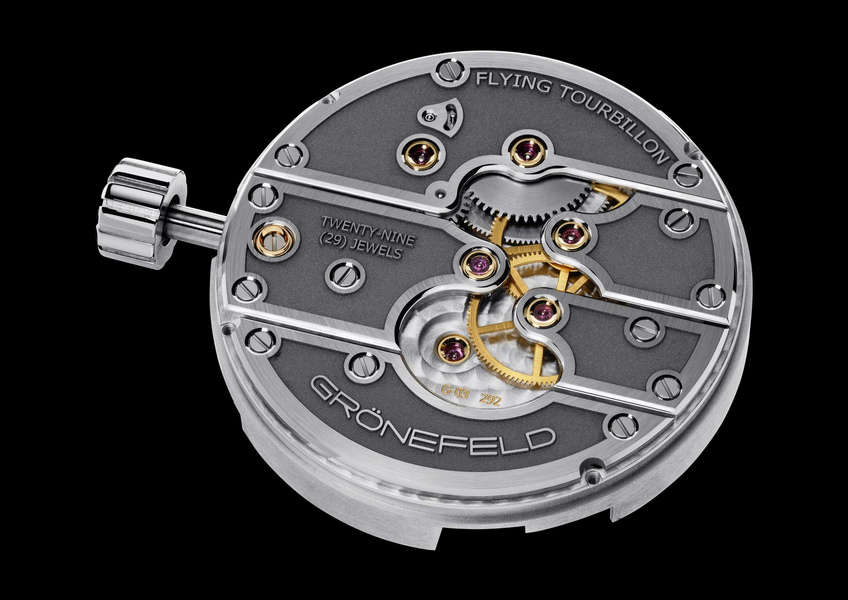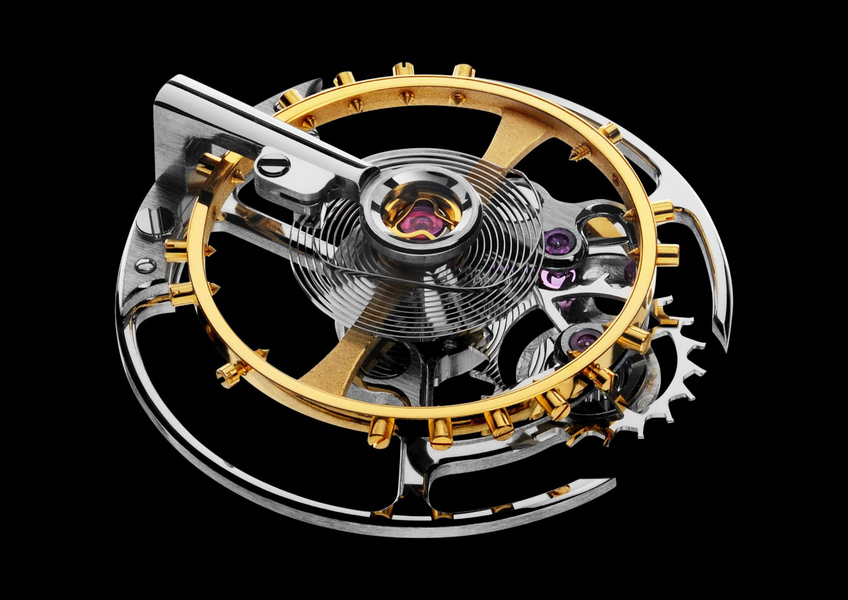Baselworld 2014: The Grönefeld PARALLAX tourbillon - Precision and ingenuity
Baselworld 2014: The Grönefeld PARALLAX tourbillon - Precision and ingenuity
The Grönefeld Parallax Tourbillon features a "flying" tourbillon with a large central seconds hand, stop seconds, a power reserve- and winding-setting mechanism indicator. The in-house movement displays sophistication and craftsmanship at the very highest level.
Well-designed and impeccably executed tourbillons are particularly accurate timepieces. The tourbillon is a circular cage encompassing the oscillating balance wheel, the beating heart of the movement. The cage rotates once a minute around its axis, minimizing the negative influence of gravity, and consequently improving the timekeeping of the watch.
Invented in 1795 by Abraham Louis Breguet to compensate the effects of gravity on the balance, the tourbillon still continues to be counted as one of the most ingenious complications in watchmaking. In 1920 Alfred Helwig further developed the tourbillon, removing the necessity for an upper support bridge to create a "flying" tourbillon. The absence of the upper bridge enables uninterrupted views to the fascinating mechanism.

The flying tourbillon allows full appreciation of the concentric, rhythmic "breathing" of the balance hairspring, while ensuring high precision. Bart and Tim Grönefeld further highlighted the tourbillon by raising it out of the movement and above the dial. As with the immaculately finished movement bridges, the tourbillon cage is crafted in stainless steel. Three days are required just for the hand finishing of the tourbillon components.
Large central seconds
The large central seconds hand evidences the precision of the Parallax Tourbillon. Normally a central seconds hand requires a friction spring to prevent small fluttering caused by play in the gear train. For the Parallax Tourbillon, the Grönefeld brothers developed the movement with an added pinion and wheel so that the energy-sapping friction spring is not required. A feature improving power transfer to the regulator and contributing to the impressive power-72-hour power reserve.

Parallax
The name "Parallax" is derived from the precision of the readability of the central seconds hand. Parallax is defined as the apparent change in position of an object when the observer changes his own position. To minimize the possibility of error due to parallax when viewing the seconds hand from an angle, the hand is exceptionally close to the outer chapter ring with the seconds indexes. In a neat addition, the one-armed balance wheel bridge always runs parallel to the central seconds hand.The tourbillon cage of the Parallax Tourbillon
Push-only crown and function indicator
In addition to the flying tourbillon and friction-spring-free central seconds, the Parallax Tourbillon has yet another innovative feature: rather than pulling the crown to set the time, which has the risk of damaging the fragile crown stem, it is pressed. An indicator on the dial displays the function selected: "W" for Winding or "S" for time setting. When the time setting function is selected, both tourbillon cage-bridge and the central seconds hand automatically return to their respective 12 o’clock positions and stop (or hack) while the time is set.
The ability to set the time to the exact second makes the Parallax Tourbillon potentially more accurate then the vast majority of tourbillons on the market today. Once the time is set and the function set to winding by a simple press of the crown, both the seconds hand and tourbillon cage start running simultaneously and in parallel.

Solid silver dial
The solid-silver dial of the Parallax Tourbillon is composed of seven individual components. The polished beveled edges of the segments mirror those of the stainless steel movement bridges, which are visible through the display back. The bevels are polished with diamond paste to a brilliant gloss and create scintillating reflections of light. Flame-blued steel hands for the hours, minutes and seconds ensure that the time is as legible as it is precise.
Stainless steel bridges
Bart and Tim Grönefeld only use stainless steel bridges for their movements. As well as the superior hardness and durability of stainless steel compared to the more generally used steel and brass, the metal absolutely gleams when polished to a mirror finish. And as stainless steel does not oxidize, the gleaming finish lasts and lasts. However, achieving superlative finishes in stainless steel is no easy task: polishing the hard metal takes a master watchmaker up to four times longer than more commonly used brass. But the Grönefeld brothers feel that effort is well worthwhile and watch aficionados are sure to appreciate the eye-catching effect.
Exclusivty
The Parallax Tourbillon is available in a red gold or stainless steel case 43mm case. Ensuring the exclusivity of this exceptional timepiece, the red gold model is a limited edition of 28 pieces and the "1912" stainless steel model is a limited edition of just 12 pieces.

